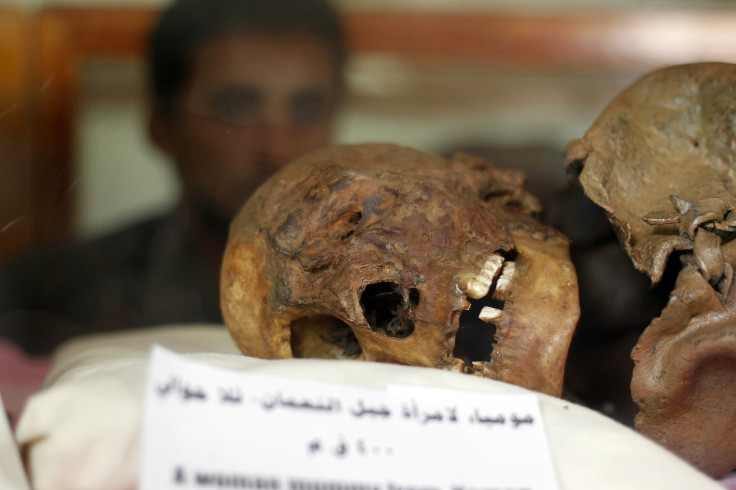Watch: 2000-Year-Old Egyptian Mummy Goes Under CT Scanner At New York Hospital

Doctors at Crouse Hospital in Syracuse, New York, got the special privilege to bodily scan a 2000-year-old corpse Sunday. Rarely does a medical expert get to diagnose an ancient mummy. So how did the doctors, nurses, and staff of Crouse Hospital find themselves with a perfectly preserved Egyptian artifact?
“Mr. Robert James Hubbard, in 1890, gave us the library building, and at that time he wanted it to be a museum as well,” Betsy Kennedy at the Cazenovia Library, explained, local news outlet Local SYR reported.
“So, in 1894 he actually went to Egypt to buy a mummy and other Egyptian artifacts so that in Cazenovia we'd have a small museum,” he added.
The mummy, named Hen, was brought to the hospital Sunday for a CT scan to find more information about it. Staff at the hospital stood witness as the facility’s oldest patient underwent a “checkup.”
"He had a tumor on his Fibula which is one of the two bones of the lower leg," Dr. Mark Levinsohn said. "Looking at it, it had all the characteristics of a malignant tumor and one that's somewhat rare. So, here we have a rare circumstance and a rare tumor and that evoked our interest a lot."
The fact that doctors could pinpoint exactly what type of tumor the mummy had, revealed how far medical science has progressed. While the mummy was scanned back in 2006, the lack of advanced CT scan and biopsy tools at the time meant that there was no way to tell what type of cancer the mummy had suffered from during its lifetime.
"Since that time, the last ten years, they've upgraded the equipment," Levinsohn added. "What, at that time was a 16 detector scanner is now a 320 detector scanner and all that additional information is now derived when we scan the body. So, we can tell all kinds of greater detail."
© Copyright IBTimes 2024. All rights reserved.






















